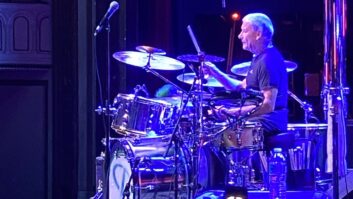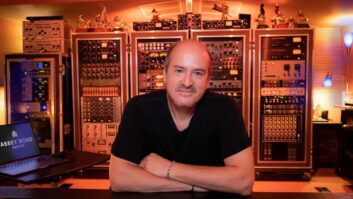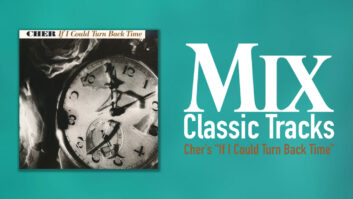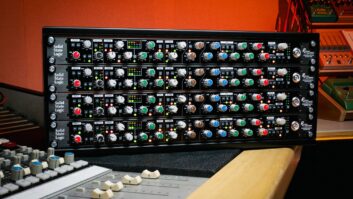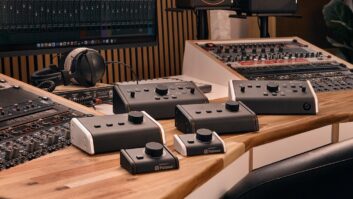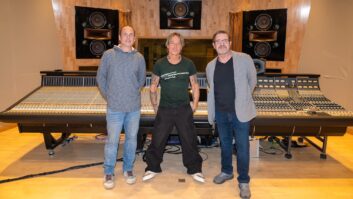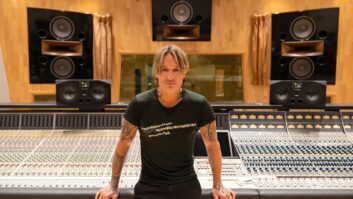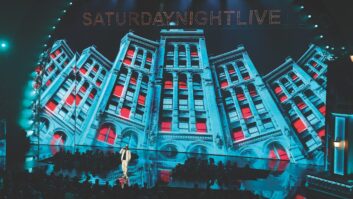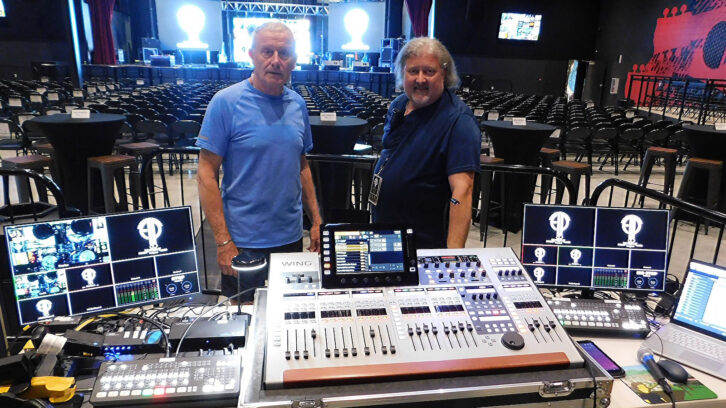
Buffalo, NY (September 18, 2023)—Throughout the 1970s, Emerson, Lake and Palmer wasn’t merely one of the biggest bands in Prog Rock—it was one of the biggest bands in the world, period. Formed in 1970 as one of the first Supergroups, ELP went on to sell more than 50 million records, sell out stadiums around the world and build a reputation for staggering, virtuoso musicianship before disbanding in 1979. While the trio reunited numerous times over the years, those opportunities came to an end in 2016 when both Keith Emerson (keyboards) and Greg Lake (vocals, bass, guitar) died only months apart. Now drummer Carl Palmer is carrying on the band’s legacy with a new tour—Welcome Back My Friends: The Return of Emerson Lake & Palmer—that uses a savvy mix of multimedia and live performance to present the group’s best-known works in a concert setting once again.
Conceived by Palmer and staged with the full support of his ELP bandmates’ estates, each show finds the drummer performing with guitarist Paul Bielatowicz and bassist Simon Fitzpatrick—and both Emerson and Lake via concert footage presented on video walls above the live band. More than half the evening features the live musicians locking in with performances culled from an ELP concert filmed at London’s Royal Albert Hall in October, 1992. Captured at the time with a full seven-camera shoot and a 24-channel multitrack recording, that performance from more than 30 years ago is now the bedrock that the current tour’s production is built upon.
Helping put Palmer’s old bandmates back on stage with him nightly is veteran engineer Steve Supparits of Resurrection Studios (Grand Island, New York). Supparits brings his own virtuosity to the proceedings as he simultaneously mixes front-of-house, handles monitors for the three live musicians, and runs switchers for two of the production’s three video walls. All that is accomplished in a compact FOH position that centers around a Behringer Wing 48-channel digital mixer, a laptop running Steinberg Nuendo, and a pair of Blackmagic Design ATEM Mini Extreme ISO video switchers.
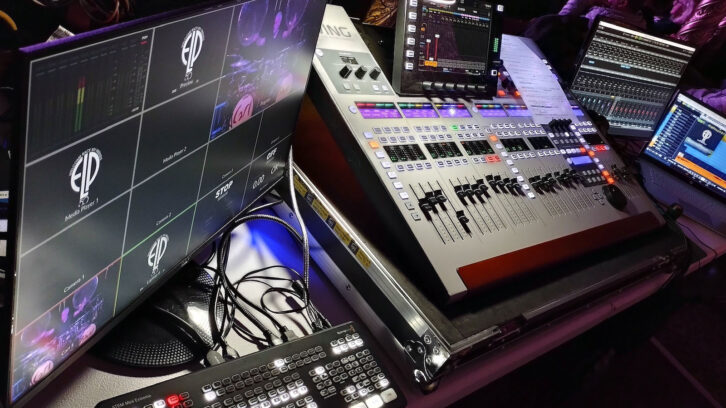
“Carl dreams up the ideas, and then it’s my job to figure out how to make them work technically,” laughed Supparits. The first step was to take the 1992 concert material apart and bring it up to modern expectations. “We had the original footage, but it was transferred from VHS,” he explained. “We did a digital transfer, took the timecode off the footage and then cleaned it up—and now it looks wonderful; a lot of it looks like HD.”
The 1992 concert had all three members of ELP play across the stage with Palmer on stage left, so there were many instances where the footage featured only Lake at center stage and Emerson at stage right, whether in closeups or two-shots. Today, the Emerson and Lake material appears on the left and right video walls, while a center wall above Palmer’s drumkit displays the live band, captured through two stationary cameras, two additional cameras run by an operator and a robotic camera controlled by the tour’s video director, who simultaneously runs that wall’s switcher throughout the show.
Book Review: Mountains Come Out of the Sky—The Illustrated History of Prog Rock
Supparits opted to run the left and right video walls to keep everything in order, tech-wise. “I chose Steinberg Nuendo as the playback software because it processes video as well as audio,” he explained. “I’m using the VidPlayVST plug-in—a VST video player that can do 1080P off video and run just like an instrument plug-in on a digital workstation, so it doesn’t bog down the processor or lock up the computer. I actually run two instances of that on a lot of songs, like ‘Lucky Man’—I have two videos running concurrently through Nuendo that are synched up with the 24-track audio, so the video is going through my two switchers to the left and right walls. Throughout, you see Keith Emerson on one wall and Greg Lake on the other wall—and then I just mix it live as if they’re on stage.”
It is a true live mix, too, as all the original performances were recorded dry without effects: “I have 12 channels of Keith’s keyboards, two channels of bass, two channels of Greg’s guitars, and there’s individual vocals, so I can bring up Greg’s vocal in a venue and then compress it and use the reverb that suits best for the house. I mix it all with the band and obviously Carl plays live.”
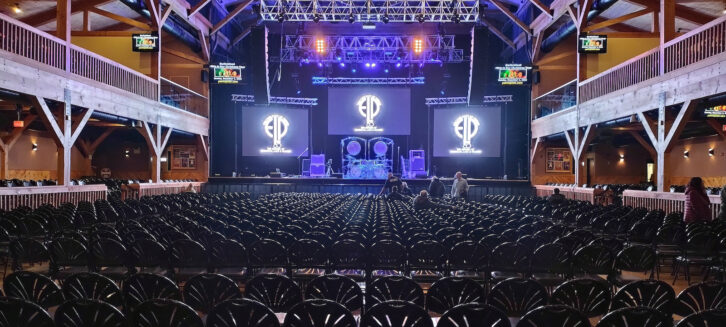
In all, Supparits oversees 54 inputs, with 24 from the video tracks and 30 inputs from the stage—16 of which are from Palmer’s extensive drumkit—plus 10 channels of stereo effects as needed. Palmer’s kit is captured with Sennheiser e 604s used above and below the two snares, as well as on each of the gongs. Meanwhile, Audix MicroDs are on all the toms, while the company’s condensers can be found on the overheads, hi-hats and ride cymbal, and each kick drum gets a single D6. “I’ve never been one of those guys that needs two mics on every kick,” said Supparits. “Nowadays with subs on a separate feed, I find it so much easier just to dial your bass drum into the top part of the P.A. for the click you want, add it to the subs in the venue for the punch, and away you go with one mic.”
The guitar is picked up with a Sennheiser e 609 hung off the cabinet, and the same goes for the bass, the results of which are mixed with the bass DI. “Both guys play a lot of synthesizer parts to emulate what Keith Emerson did,” said Supparits, “so there’s a bass synthesizer played through pedals, while the guitar player goes through a laptop, so he can create any synthesizer sound while he’s playing his guitar, and that’s a stereo direct. Along with those, the bass player has a 10-string Chapman Stick that is a wonderful sound, so we have quite a variety of sound to work with.”
All those sounds culminate in an ELP concert experience that, across the three musicians on stage and eight crew members in tow, is presented with sincerity and commitment—and the fans sense that, night after night. “Carl’s very driven as far as wanting to put on a really good show and give the audience not only visuals, but the sounds that they’re expecting to hear,” said Supparits. “On the way out, half the people come over crying, just thanking us for doing this and saying how wonderful it was to see the guys again.” With a year’s worth of shows across the U.S., Japan and Europe already lined up, further opportunities to make that connection are in store.
